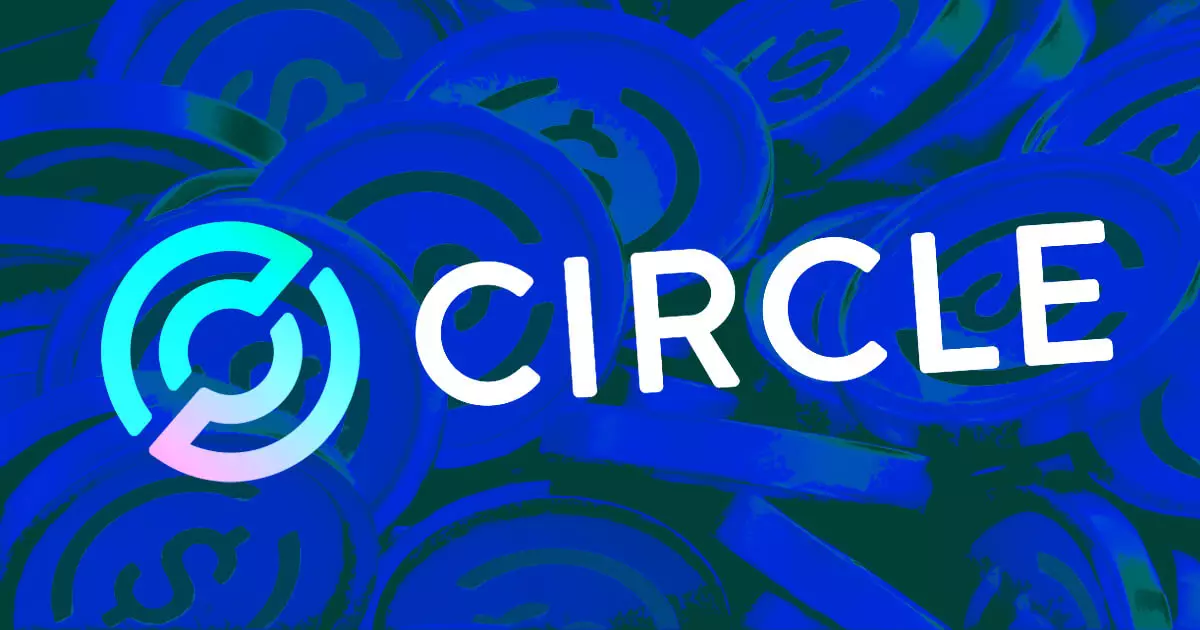Circle’s quest to take its stablecoin issuer public is a bold maneuver that reflects both ambition and an awareness of an evolving crypto landscape. With an initial public offering (IPO) targeting a staggering $5 billion valuation, the company is attempting to solidify its presence and viability in a market often overshadowed by uncertainty. Yet, the company finds itself at a crossroads, exploring potential acquisition opportunities that could drastically alter its trajectory. This moment sets the stage for a deeper reflection on what it means to navigate the minefield of innovation in finance while maintaining competitive integrity.
The ambition to go public symbolizes an essential vote of confidence not just in Circle itself but also in the broader cryptocurrency ecosystem. Yet, one must wonder if this path is fraught with challenges relating to market turbulence and regulatory scrutiny. Is an IPO the beacon of hope that brings the stability Circle envisions, or does it expose the company to pressures that could compromise its mission?
Intriguing Acquisition Talks
While the IPO is undoubtedly a significant factor, the exploration of an acquisition—most notably by Coinbase or Ripple—adds another layer to this intricate narrative. Reports suggest that informal talks are already underway, with Coinbase emerging as the most logical suitor. But herein lies the rub: Does an acquisition signify a successful merging of strengths, or does it dilute Circle’s pioneering identity in favor of corporate consolidation?
Coinbase’s historical ties to Circle through the foundational Centre Consortium set the stage for a complex relationship. On the surface, the revenue-sharing arrangement implies a symbiotic partnership; however, the intricacies of their governing structure indicate potential strains. With stipulations that limit Circle’s ability to form new partnerships without Coinbase’s approval and grant the latter partial control in case of insolvency, one cannot ignore the degree of interdependence involved. This is more than a mere business arrangement— it’s a partnership that may border on an entangled co-dependence.
The Ripple Factor
The mention of Ripple also adds depth to the conversation. Although Ripple’s $4 billion to $5 billion offer to Circle was reportedly rejected as too low, it raises questions about fair valuation amidst a volatile market. Unlike Coinbase, Ripple is more notorious for its aggressive acquisition strategies, and its interest in Circle speaks volumes about the importance of stablecoins in the ongoing battle for cryptocurrency dominance.
Ripple’s mix of cash and a significant amount of XRP in its bid does lend credibility to the offer. The potential of merging with Ripple could offer Circle a unique channel for growth, especially considering how Ripple is carving out its space with multiple partnerships and acquisitions. However, the rejection of Ripple’s proposal indicates a bold stance by Circle—a refusal to undervalue its unique proposition. This is a classic example of navigating uncertainty with an iron fist, emphasizing a determination to retain control.
The Road Ahead: Advantages and Risks
The future of Circle hinges on making strategic decisions that resonate with both immediate necessity and long-term viability. An IPO might provide a boost in credibility and capital but would inevitably expose the company to public market fluctuations. Meanwhile, the exploration of acquisition remains an intriguing alternative. The advantages of joining forces with a powerhouse like Coinbase seem advantageous, yet would it also lead to the erosion of Circle’s foundational ethos?
The ongoing evolution of Circle presents not only questions about financial viability but also broader implications for how fintech companies operate in this sprawl of cryptocurrency. The need for innovation must be balanced with a strong sense of governance, stability, and ethical responsibility. Will Circle emerge as a pioneer of independent market solutions, or will it find itself shackled to a larger corporate structure, diluting its transformative vision?
As the narrative unfolds, the choices made by Circle over the coming months will profoundly influence not only its immediate future but also the landscape of cryptocurrency itself. The $5 billion question looms larger than ever, inviting scrutiny and speculation on the direction that this trailblazer will take.


















